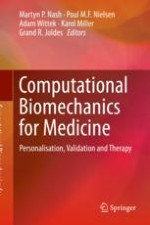2020 | OriginalPaper | Buchkapitel
A Hybrid 0D–1D Model for Cerebral Circulation and Cerebral Arteries
verfasst von : Nixon Chau, Harvey Ho
Erschienen in: Computational Biomechanics for Medicine
Aktivieren Sie unsere intelligente Suche, um passende Fachinhalte oder Patente zu finden.
Wählen Sie Textabschnitte aus um mit Künstlicher Intelligenz passenden Patente zu finden. powered by
Markieren Sie Textabschnitte, um KI-gestützt weitere passende Inhalte zu finden. powered by
